Digital Nomad Guide to Living in Hoi An
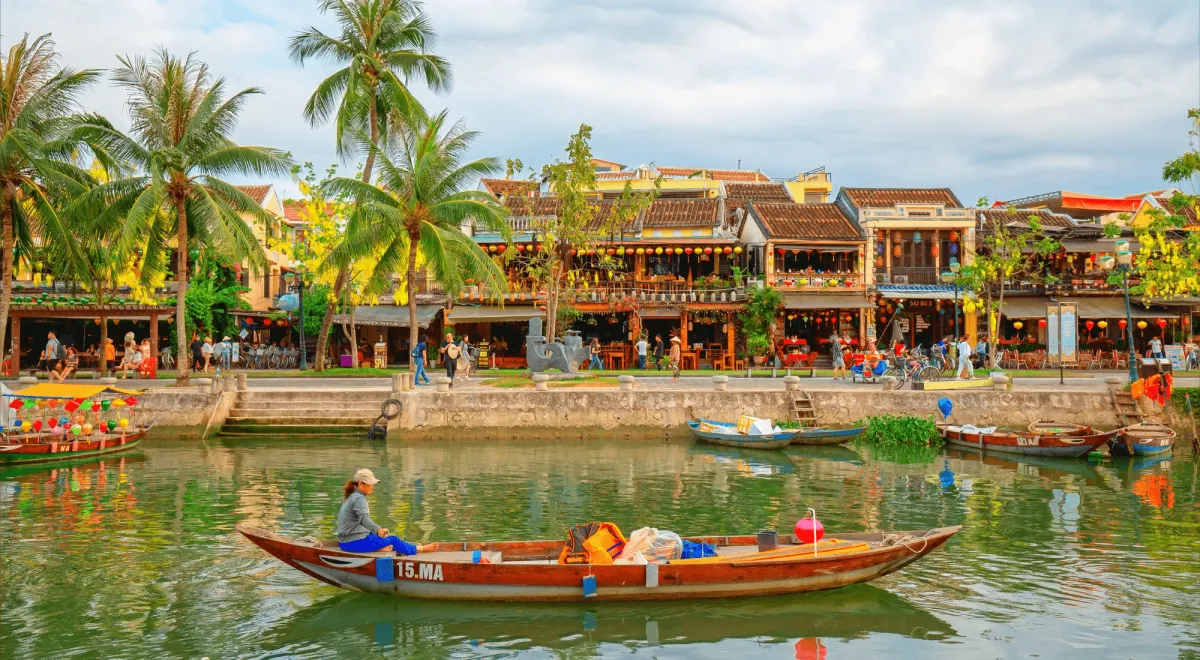
Although Hoi An can get excessively busy, it’s been a favorite among digital nomads and has some really nice quiet spots and areas where you can concentrate on work without feeling too overwhelmed.
This petite little town is charming and interesting for various reasons. Its historical importance as a trading port and the mix of different influences are evident in the architecture - Hoi An achieved UNESCO World Heritage Site status in 1999 for these well-preserved buildings, which showcase styles from many parts of the world. As you wander around the small streets, you come across Japanese architecture, grand Chinese houses and temples, and French colonial buildings.
It has small museums where you can learn about folk culture, ethnic minorities, and ceramics unique to this area. It’s definitely worth spending at least a couple of days in Hoi An. We’re sure you’ll find something to your liking as there is something for everybody.
This guide will tell you about what really stood out to us and why we think Hoi An is an interesting place to visit, but also a great place to settle for a few months.
Why Visit Hoi An as a Digital Nomad: Our Experience
Hoi An has everything you need, but a really good reason to visit is its active community of digital nomads. If you’re looking to meet people like you, you'll find plenty of networking opportunities.
There are many places to work from. Most accommodations have good Wi-Fi and the cafes do too. You can also find sweet local spots, where you can order all sorts of coffees, Vietnamese coffee, egg coffee, coconut coffee, orange coffee, or just your old cappuccino!
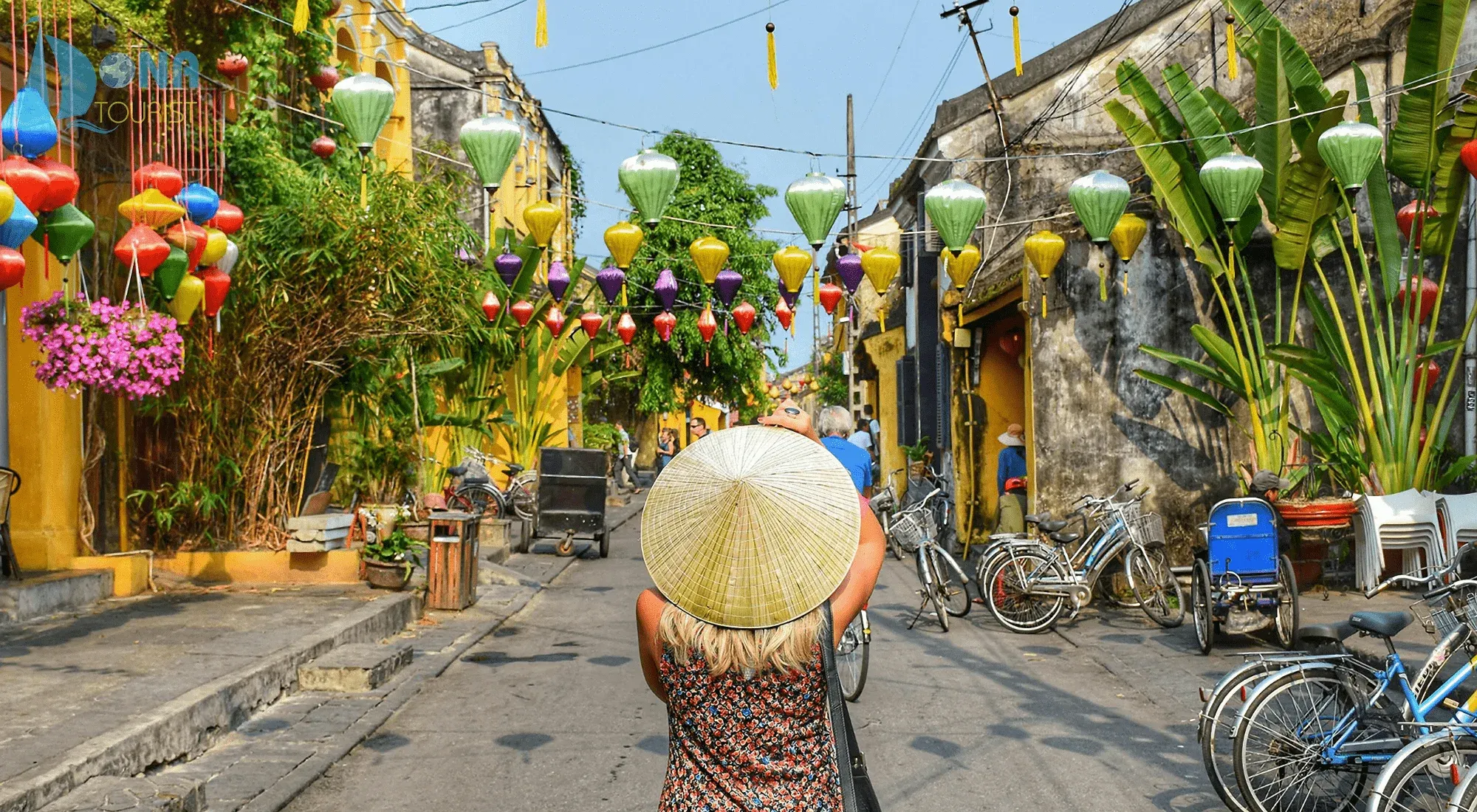
However, if you decide you want to be more comfortable, and go to The Hub, a very good coworking space in the area, you will find yourself with a bunch of creative people who have decided to make Hoi An their new home. Group meals, game nights and ice baths are organized on a weekly basis. The Hub is not only the best option in Hoi An, but it’s also one of our favorites in Southeast Asia. It has won multiple awards but has kept a non-corporate atmosphere.
If you’re like us and enjoy mixing cultural visits with work on a daily basis, Hoi An’s attractions are bite-sized and perfect for a morning stroll before starting the workday. This also lets you skip the crowds that start to arrive late in the morning.
The nearby Marble Mountains and Cham Islands are great for hiking and diving—these are nice ideas for weekend trips.
Best Areas To Stay in Hoi An
This really depends on you. The busy Old Town is probably best for shorter stays where everything is within walking distance.
For longer stays, we suggest finding somewhere between the center of Hoi An and the coast, as you get the best of both worlds. Cam Chau and Cam Thanh are the neighborhoods you might want to consider.
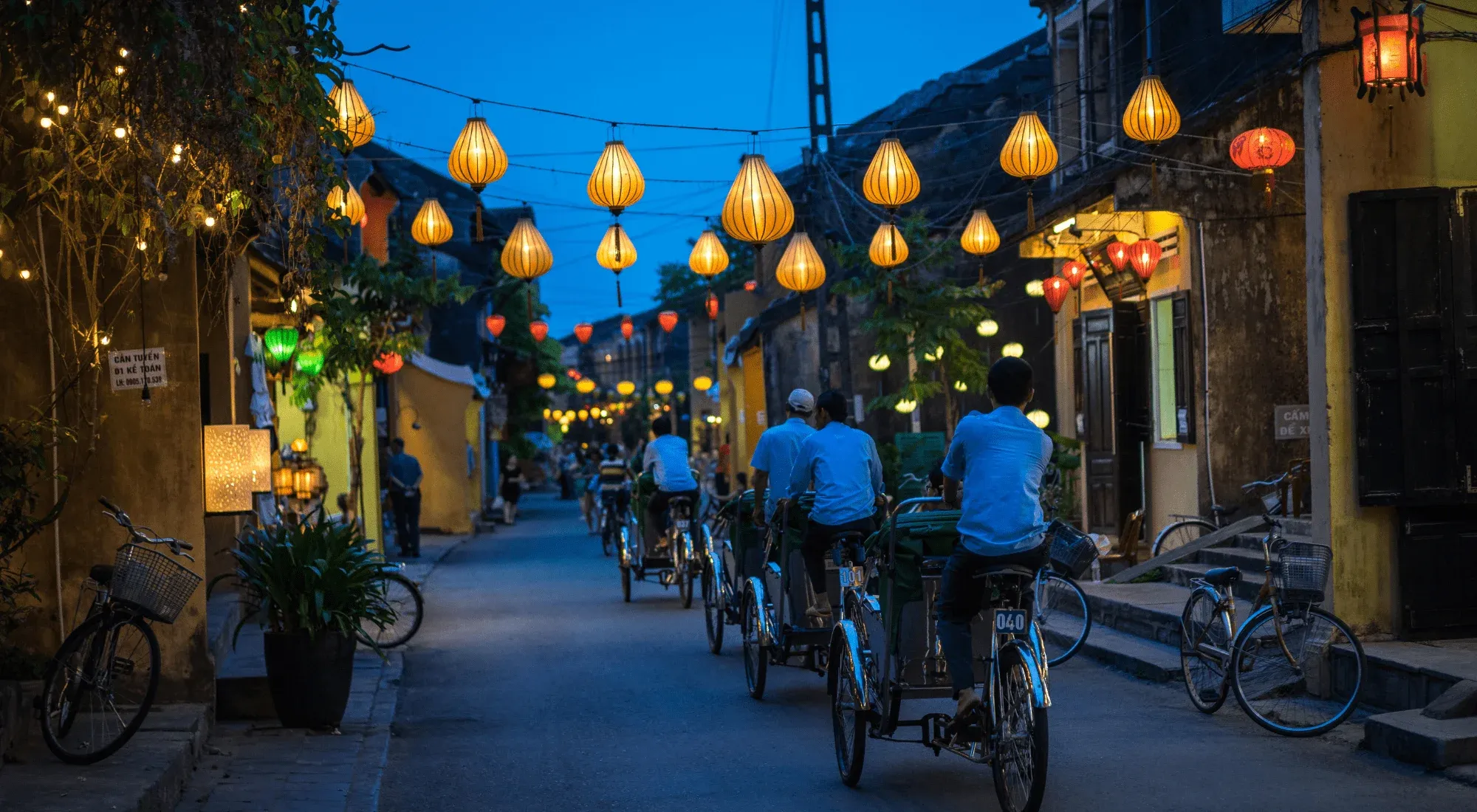
Cam Chau is on the edge of hundreds of paddy fields. It is a very laid-back residential area where you can find places to stay with beautiful views. It reminded me of the relaxed atmosphere in Siem Reap’s Wat Damnak neighborhood—a great option for digital nomads seeking a quieter yet connected lifestyle.
Cam Thanh is known for its coconut palm forests and pretty canals. There is a mix of upmarket resorts and eco-stays hidden in the lush green of the palm trees.
You also have the option of staying near the coast, but it might feel like you’re in a different town altogether. However, we do recommend you visit the An Bang Beach area, which is full of restaurant shacks selling delicious seafood.
The range of choices you have is vast; you can literally find places tailored to you. However, do look in advance if you are looking for something special!
Accommodation Options in Hoi An
While private accommodation options abound, Hoi An offers some exciting alternatives for a more social or immersive experience. Let's check them out!
Coliving Spaces
The Hub offers coliving options, from dorm beds starting at $175 a week to Best View Rooms at $399 a week. Sometimes the coworking offices we go to don’t have much sense of community, but The Hub really puts effort into everything they do. If you’re into socializing, this would be a great option.
Homestays
Gioian Boutique Villa is a simple place located a 20-minute walk from the center. What made this place special was the family who hosted us. Their cooking lessons are some of the best in town, and people would arrive every day to experience Vina’s class.
With just a three-minute bike ride down the road, we were in the middle of rice fields – by now you have probably realized we are huge fans of rice fields. They also have both bikes and mopeds for rent!
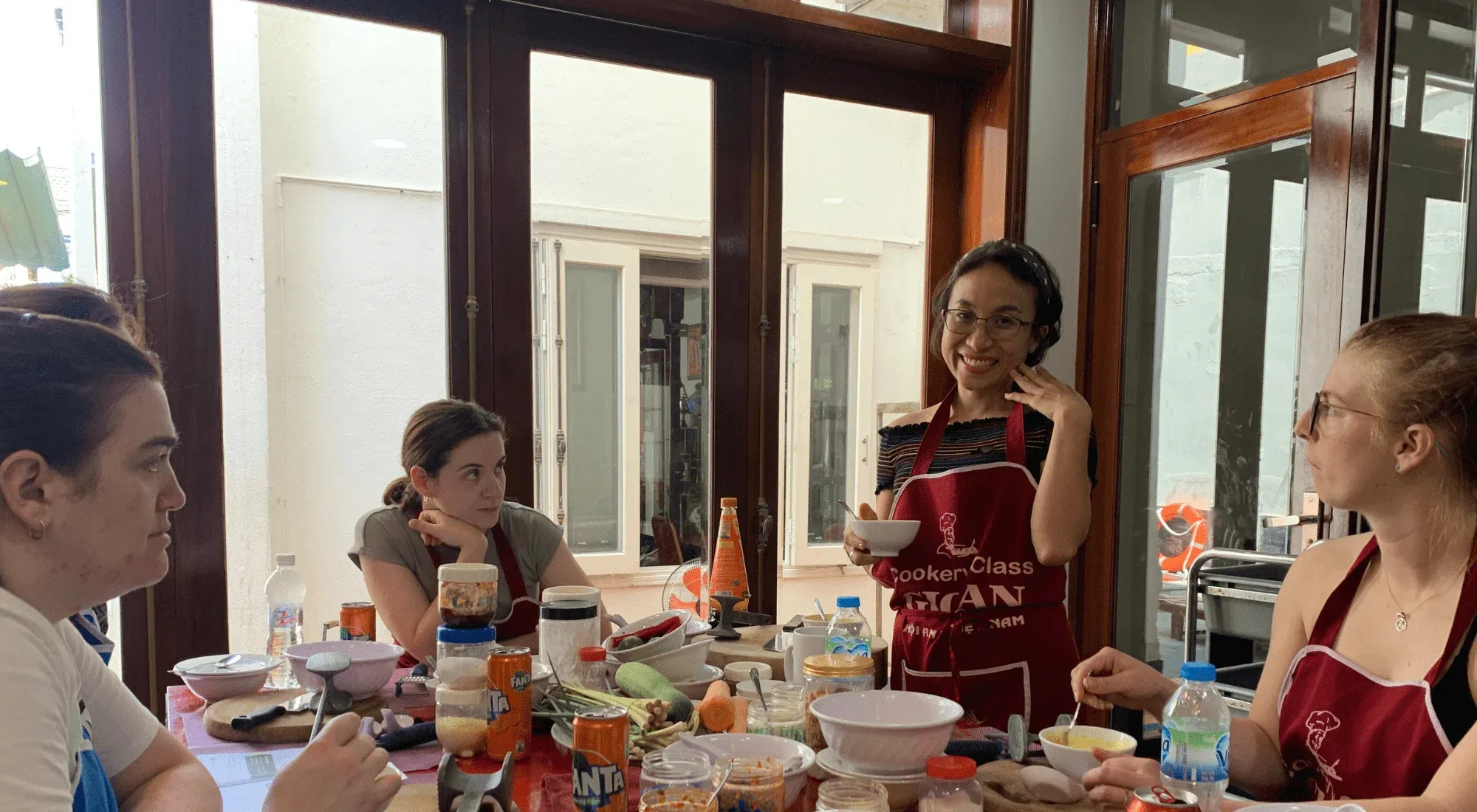
Working Remotely in Hoi An
Internet and WiFi
Almost everywhere has good Wi-Fi, and there is good data coverage around Vietnam apart from when you’re in REALLY remote places.
If you are looking for data roaming for your phone, you have the eSIM option, which is really handy but a bit more expensive, or the normal SIM cards sold by the main operators: MobiFone, Viettel, and Vinaphone.
Pre-Paid Local SIM Cards and eSIMs for Hoi An
Vietnamese SIM cards are affordable and widely available. A prepaid SIM card typically costs between 50,000 to 100,000 VND ($2-$4 USD), which includes the SIM itself and some initial credit. The major providers offer various data plans suitable for travelers. You can purchase SIM cards at airports, mobile stores, and convenience stores. If you prefer, you can also use an eSIM instead. If you use Airalo, which is our favorite app for eSIMs, you can get a maximum of 20GB with a validity of 30 days for $32.
Work Spots, Laptop-Friendly Cafés and Coworking Spaces in Hoi An
We spent a few weeks exploring Hoi An and found some fantastic spots to work, from coworking spaces to chill cafes with great Wi-Fi. Here's the lowdown on the best places to work in Hoi An.
Best Coworking Space in Hoi An
The Hub – We can’t fault this place. It has won awards for being the best coworking space two years in a row. It’s set in the quiet Cam Chau neighborhood overlooking rice fields, has a good variety of spaces, and has its own little cafe, which makes really yummy food and drinks! The space is open 24/7 and has a buzzing community with lots of activities and weekly evening meetups.

Best Cafes To Work From
- Ana 32 – Ana 32 is in a quieter area of town and serves up some really good breakfasts, yogurts, coffees, and juices and the family running it is very welcoming. It’s quite small, but during quiet times it’s a nice place to stop by.
- Tropical Eatery – It's in the same area as The Hub, in fact just around the corner. It has a great choice of food and a beautiful outdoor area at the back. It’s so relaxed and has quite a few seating arrangements to choose from - you’d be basically working in a zen garden!
- Roving Chill House – Another place out in the rice paddies – I promise you that the next article won’t just be about rice fields. This is another great place to spend the afternoon working.
- Fika Cafe – A place in the old town that feels like home, on two floors with outdoor terraces and other outdoor areas. Fika is a vegan café offering toasts, soups, salads, and all-day breakfasts.
- Phin Coffee – I put this last as it’s so popular. I think it’s a great place but it does get really busy at peak times of day. However, there’s loads of space and they also have great-looking homemade cakes! We managed to resist the temptation. Yes, we are slightly regretting it.
How Much Does It Cost to Live in Hoi An?
Well, if most people use the cost of a pint of beer as a reference, in Vietnam, we would use a bowl of pho or banh mi! Here is a list of things that might give you a better idea:
- Breakfast: 25,000-50,000 VND ($0.90-$1.80) for a bowl of pho or a banh mi.
- Meal at a market: 25,000-70,000 VND ($0.90-$2.70) for street food or a market meal.
- Meal in a restaurant: 120,000-250,000 VND ($4.50-$9) for a meal in a mid-range restaurant.
- Accommodation: Nightly rates for homestay/hostels range from 250,000 to 500,000 VND (roughly $9 to $18). Hotel prices start at 500,000 VND and go up to 1,250,000 VND per night ($18 to $45). Monthly rents typically range from 5,000,000 to 12,500,000 VND ($180 to $450) for long stays.
- Motorbike Hire: 120,000-250,000 VND ($4.50-$9) per day, or 1,250,000-3,750,000 VND ($45-$135) per month.
- Bicycle Hire: 25,000-50,000 VND ($0.90-$1.80) per day, or 375,000-750,000 VND ($13.50-$27) per month.
The more Western food you opt for, the higher the cost. Western-style meals are significantly more expensive than local Vietnamese dishes, but what are we here for anyway?!
Digital Nomad Visa and Visa Options for Hoi An
With more and more countries starting to offer Digital Nomad Visas, Vietnam is somewhat behind. It was one of the last in Southeast Asia to start allowing the famous visa extension option since the end of COVID-19, and there is still no news about the possibility of digital nomad visas becoming available anytime soon.
These are the main options for people seeking a visa in Vietnam:
- Visa Exemption: citizens from 23 countries are allowed to stay in Vietnam without a visa for either 14, 30, or 45 days, depending on their country of origin. For example, people from Italy and the UK can stay for 45 days.
- E-visa: allows for a stay of up to 30 days with a single entry for people from 80 countries. The process involves applying online, paying the fee, and receiving the e- visa via email.
- Visa on Arrival (VOA): this option is offered to 46 nationalities and allows a stay of up to 90 days in Vietnam, providing a longer period compared to the E-visa. This option allows you to request a visa on arrival after receiving a pre-approval letter, which you need to print and take to the airport. All major airports and various land and sea border gates accept the pre-approval visa letter.
- Work Visa: if you intend to get formal employment in Vietnam, you will need to secure a work visa.
- Tourist Visa: some nationalities must seek pre-approval from the Vietnamese consulate before they travel to Vietnam.
Other Useful Info for Digital Nomads in Hoi An
How Do You Get to Hoi An?
As mentioned previously, Vietnam is vast! It takes around 13 hours to get to Hoi An via public transport from Ha Noi or Ho Chi Minh. If you’re trying to avoid flying, you may need to consider this.
If you are arriving from abroad, you have the option to fly into Ha Noi, Ho Chi Minh, or even better, Da Nang, which is the closest. You will still have to get a bus or a taxi from Da Nang to Hoi An. Taxis usually cost $25-$35 and take about an hour.
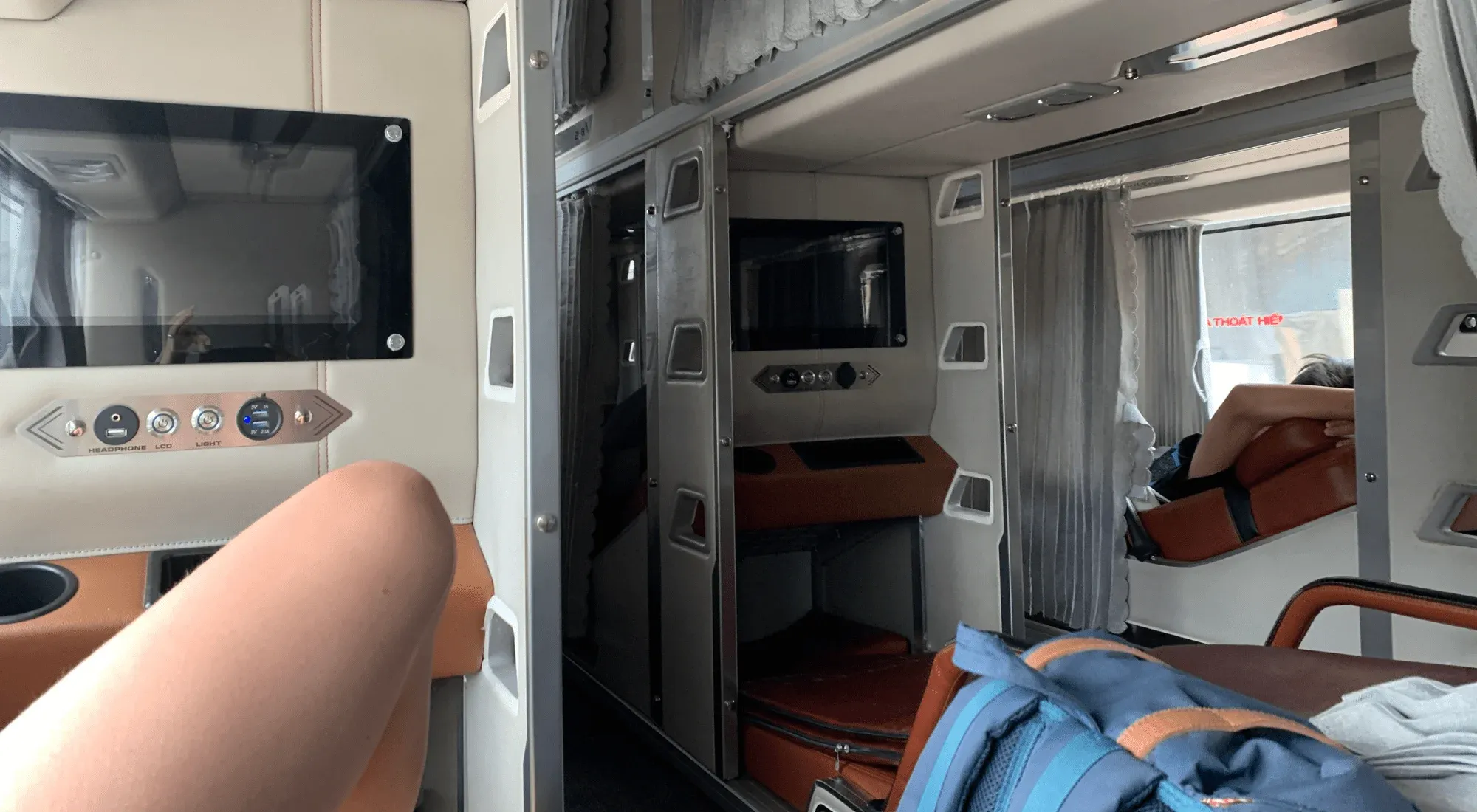
If you're coming from within Vietnam including Hanoi, Ho Chi Minh, or Da Nang instead, you have several different options:
- Night buses: These are a great experience everyone should try at least once, as we haven’t really found them anywhere else in Southeast Asia. They’re a great alternative to day buses as you’ll most likely be traveling in quite hot and heavy weather. However, be warned, there are quite a few tactics you need to know about to get the most comfortable sleep!
- Trains: There is no train station in Hoi An, so if you’re coming by train, you will have to go to Da Nang and either grab a bus or a taxi. Interestingly, trains are a lot bumpier than buses, but they are slightly cheaper.
- Motorbike: You can either rent a motorbike or, if you are coming from Huế, there will be a few people offering a bike ride from Huế to Hoi An, including luggage transfer. We did not do this as it was raining and thought our tech gear would not be too happy about the combination of water and bumps!
- Flights: You can easily find daily flights from either Ha Noi or Ho Chi Minh to Da Nang, which is also an international airport. These domestic flights take just over an hour, and the prices range between $20 to $100.
- Private transfers or taxis: From Huế (3 hours) or Da Nang (1 hour).
When is the Best Time to Visit Hoi An?
When planning a trip to this corner of the world, you have to consider the pros and cons of the rainy and dry seasons as well as the possibility of being there during an important national or regional festival.
Because Vietnam is so big, the seasons vary from area to area. In Central Vietnam, the rainy season begins in September and ends around December. In the north and south of Vietnam, it starts three months earlier, in May. I know, it’s not exactly what you would expect.
The best time to visit Hoi An is just after the rainy season, from January to March, when the weather is slightly cooler than the hotter months from May to July and there are fewer visitors.
Consider also that Hoi An can be hit by floods, typhoons, and high humidity during the main months of the wet season. The Old Town and the areas closest to the Thu Bồn River are the first to flood, but local authorities are well-prepared for these situations.
Important Festivals in Hoi An and National Holidays to Consider
- Full Moon Night or Lantern Festival in Hoi An: Every 14th day of each month. People release lanterns on the Thu Bồn River, wishing for luck, health, wealth, etc.
- Ong Fish Festival: Held in mid-March, this is a very important festival for fishermen who believe in Ong Fish’s power to calm the waves of the sea and help fishermen return safely.
- Tết (Vietnamese New Year): Dates vary, but usually between late January and early February. It’s a major celebration all over Vietnam where people celebrate with their families and pay respects to their ancestors. Customs vary by region, but there is always a lot of cooking involved.
- New Year's Day: 1st January. Many shops, offices, and banks will be closed.
- National Day: 2nd/3rd September. Celebrating Vietnam’s independence from France in 1945. You will probably see fireworks and patriotic displays.
- Reunification Day: 30th April. This date commemorates the fall of Saigon in 1975 and the end of the war between America and Vietnam. (Fun fact: the Vietnam War is often called the American War in Vietnam.)
- Other Dates: Hung Kings Commemoration Day (18th April) and International Labor Day (1st May)
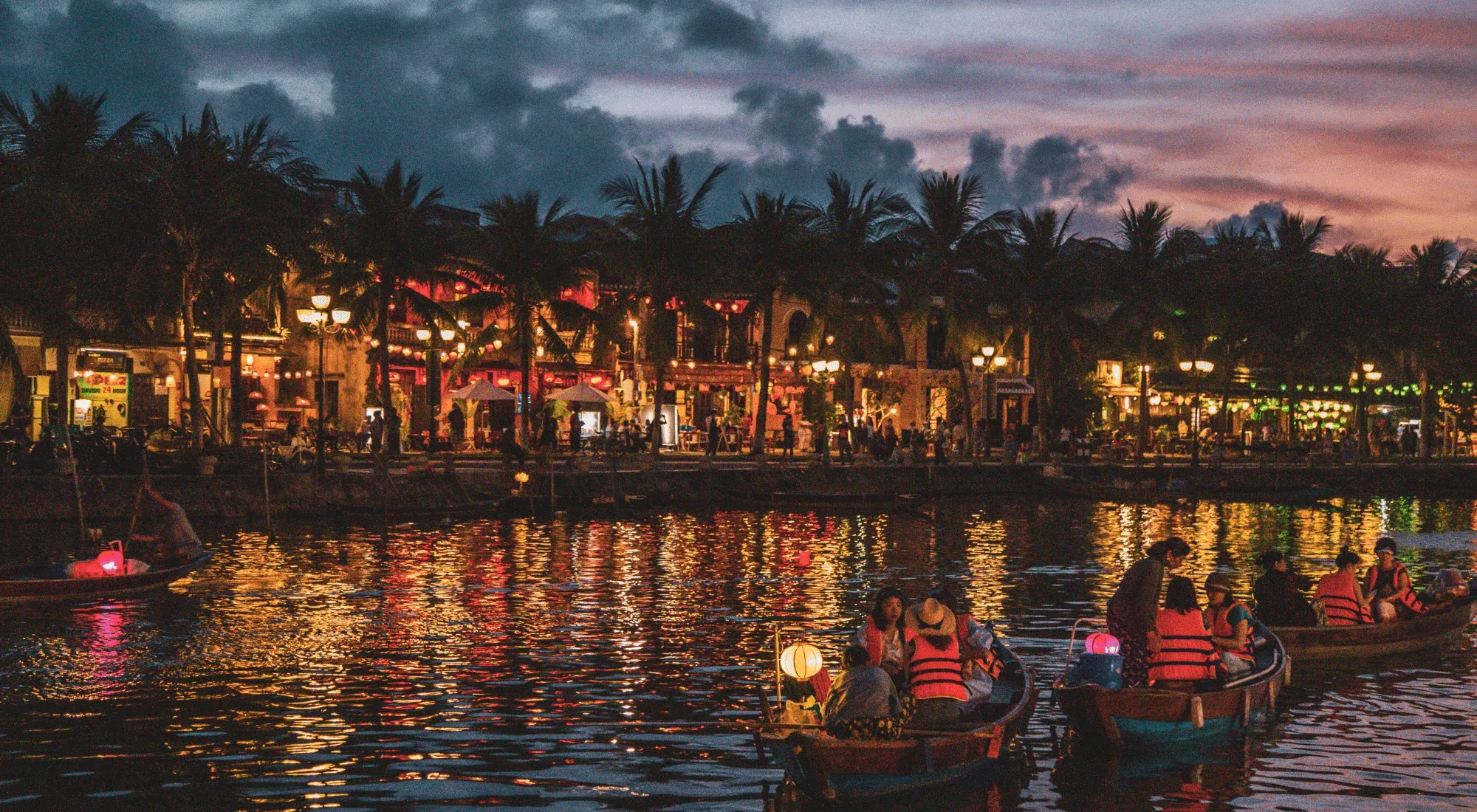
What Are the Top Things To See and Do in Hoi An?
We had a lot of fun in Hoi An and there are plenty of things to do. Here are our favorites:
1. Visit the Hoi An Museum of History and Culture
A good place to start as you will understand how so many influences came together to form what Hoi An is now.
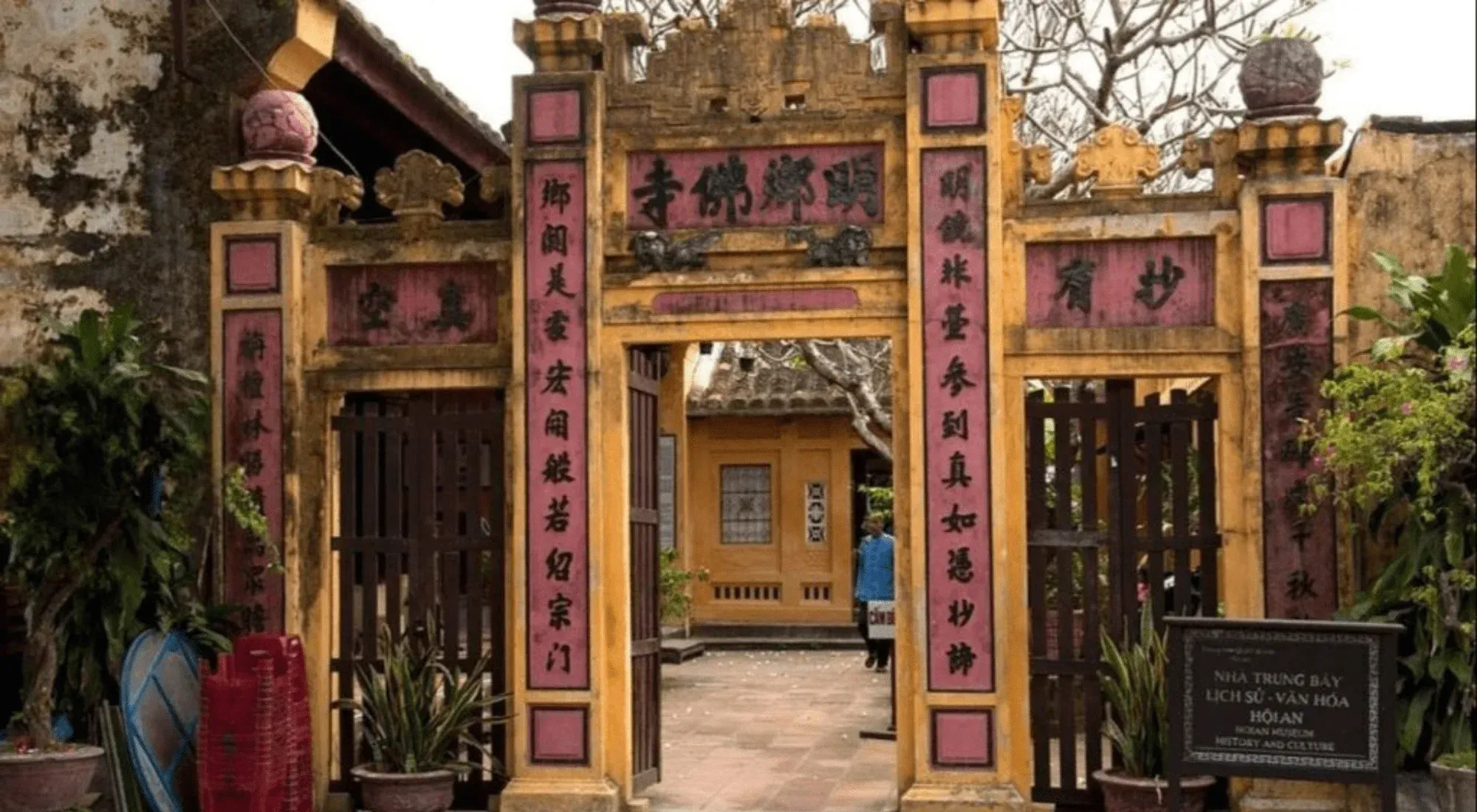
2. Go for a Meal at An Bang Beach
A lovely spot to watch the beach fill up at sunset with people eating on the beach and having fun in the water - it gets packed! At lunchtime, it’s quieter, and you can enjoy delicious fresh fish in the unimposing restaurants.
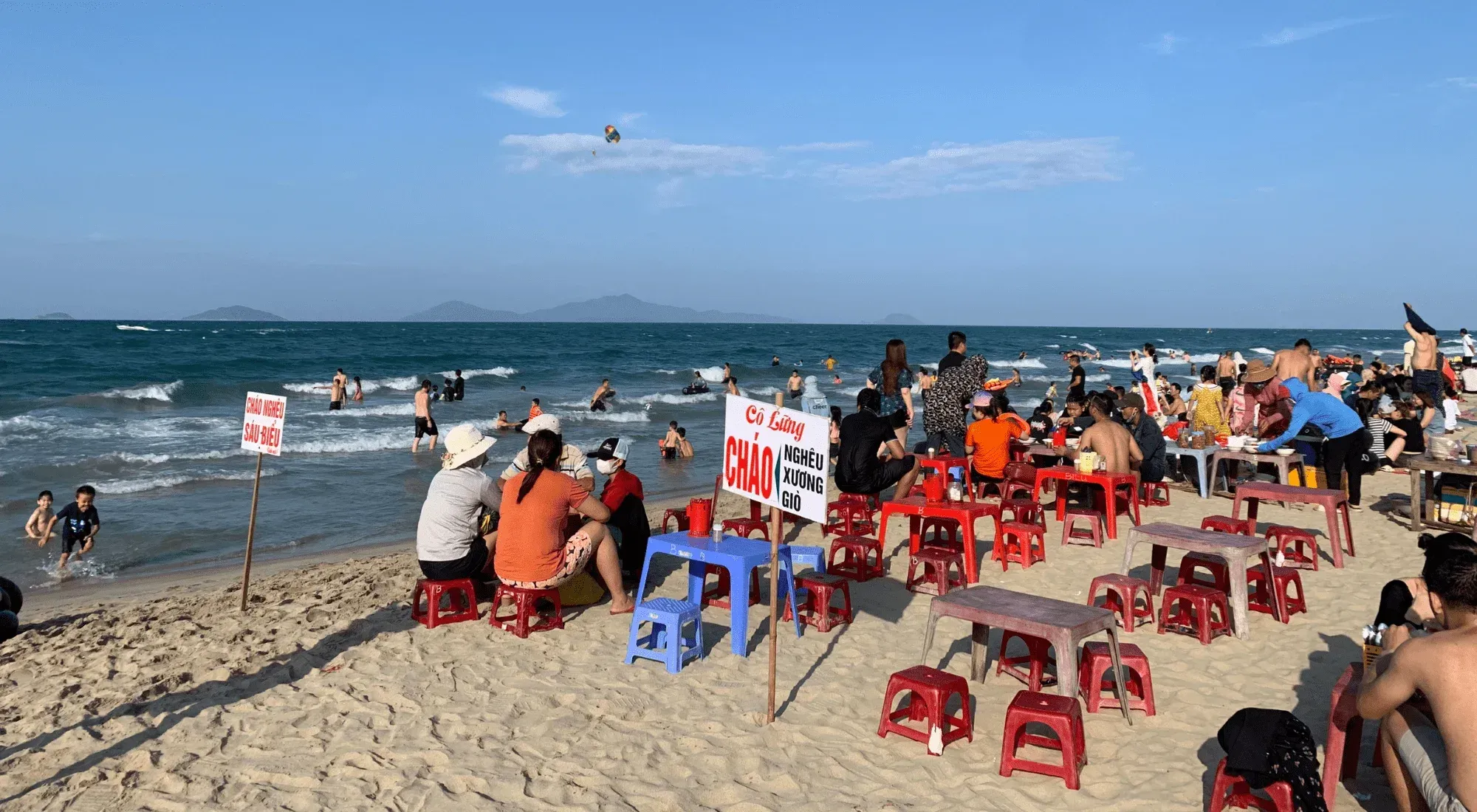
3. Go and Eat a Banh Mi from Bánh Mì Phượng
Well, it has to be done. Everyone goes there, and yes, they are really, really good.
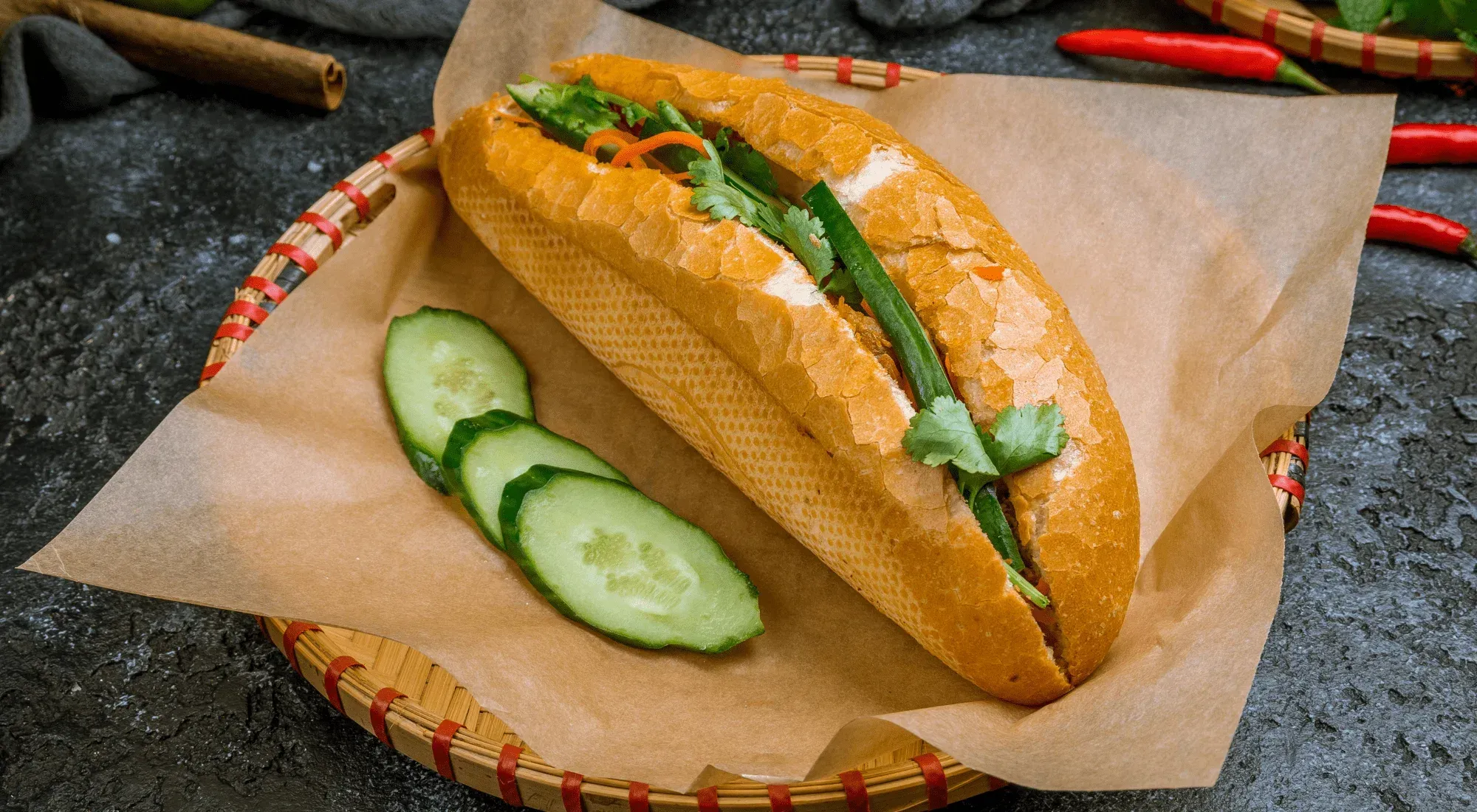
4. Visit the My Son Sanctuary
If you have the time, visit this complex of Hindu temples, just a short bus ride away from Hoi An. There are over 70 temples and tombs from the Champa Era, constructed in red brick with very sophisticated bas-reliefs. There is a museum where you can learn all about the Champa Kingdom and its history.

5. Cross Chùa Cầu - The Japanese Bridge
Built in the 16th century to connect the Chinese community across the stream to the Japanese quarter, facilitating trade between the two as Hoi An was already a thriving international trading port. This bridge is featured on the 20,000 VND note and is a very important example of Hoi An’s rich history.
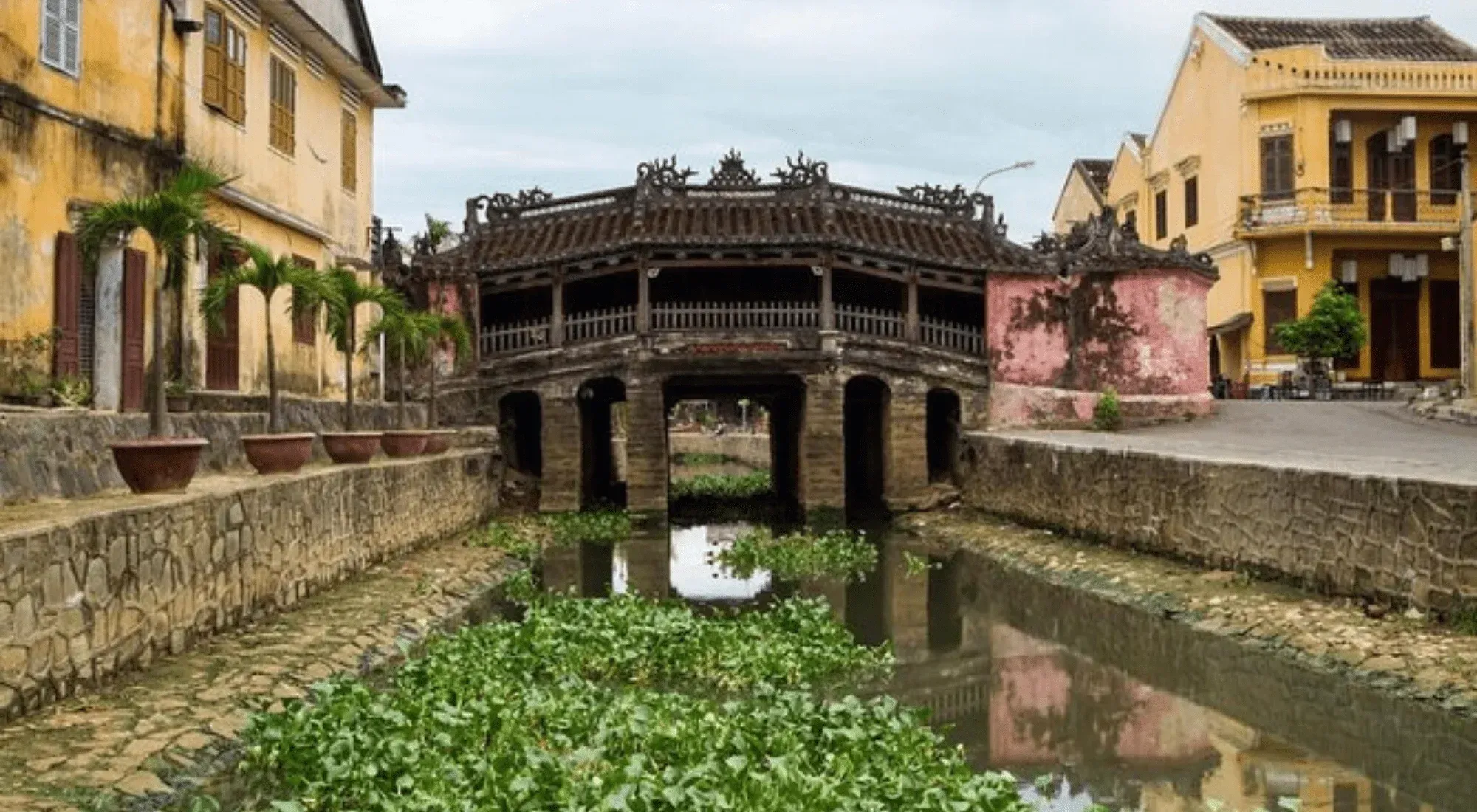
6. Admire the Chinese Architecture
The reason for Hoi An’s UNESCO status and something you will definitely see when wandering around. You can visit temples like Quan Cong Temple, multiple Assembly Halls like Phuc Kien Assembly Hall, and private houses like Tan Ky Old House, an old merchant house. It’s interesting to see how spaces are divided completely differently from private lodgings in the West - you might be inspired! We were.
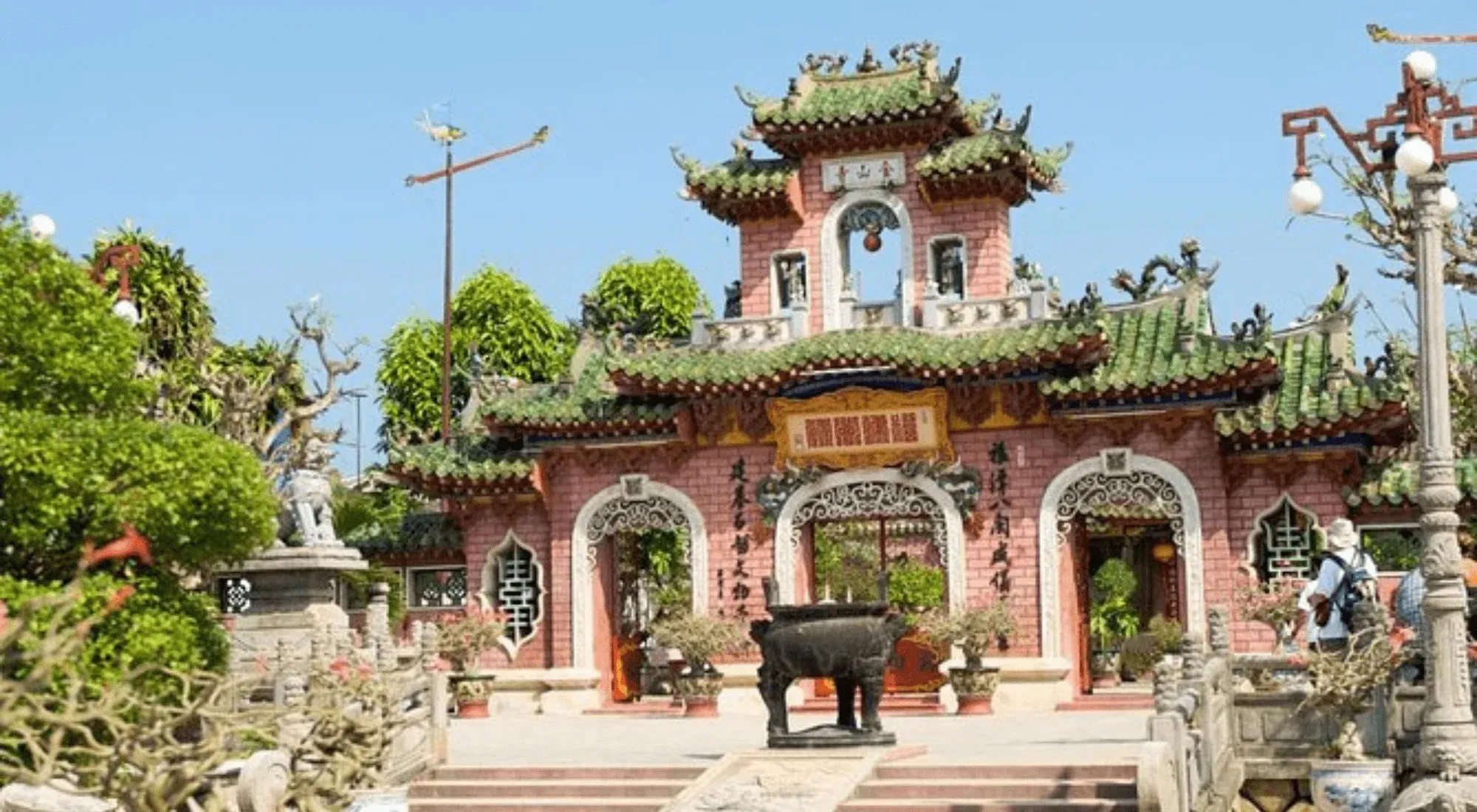
7. Explore the Paddy Fields in the Evening (Don’t Forget Mozzy Guard!)
Most of Hoi An is surrounded by paddy fields, which allow you to enjoy a more zen vibe. Bike rides around smaller areas make you feel more a part of the real Vietnam. One of our favourite memories is seeing children and a few parents flying their kites most afternoons —a beautifully peaceful sight.

8. Get a Tailor-Made Suit or Dress
We’re not that keen on clothes, but if you have a special occasion coming up, you could get something made by these very skilled artisans. There are quite a few, so it’s a good idea to get a recommendation from someone you meet while you’re staying in Hoi An.
9. See the Hoi An Lanterns
Hoi An is famous for its brightly coloured lanterns. They are everywhere—in the shops, on the boats, and hanging in the streets—and they make the town look lively and unique. You can even find lantern-making workshops.
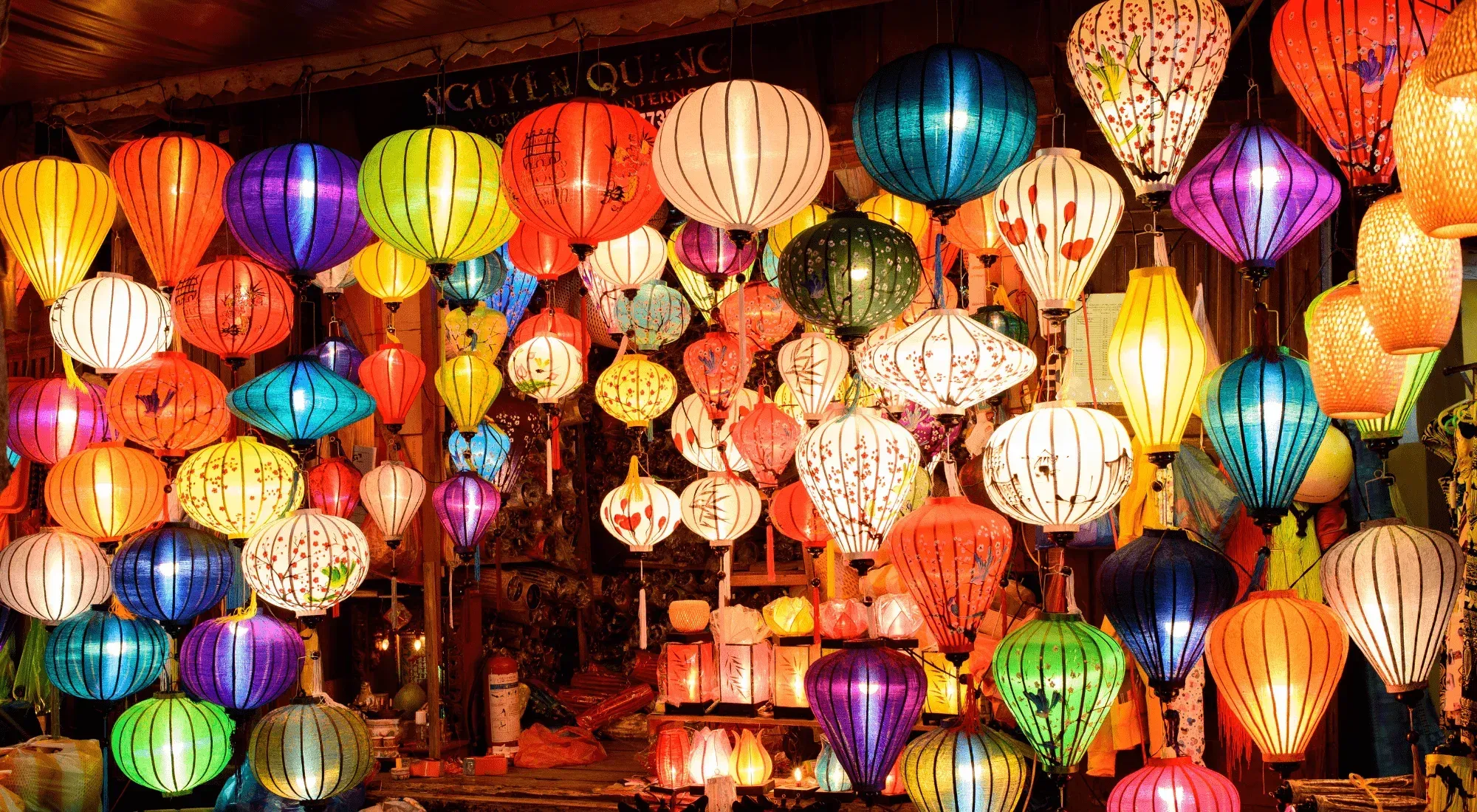
What About Food to Try?
There is so much to taste in Hoi An which has dishes that you can’t really find elsewhere.
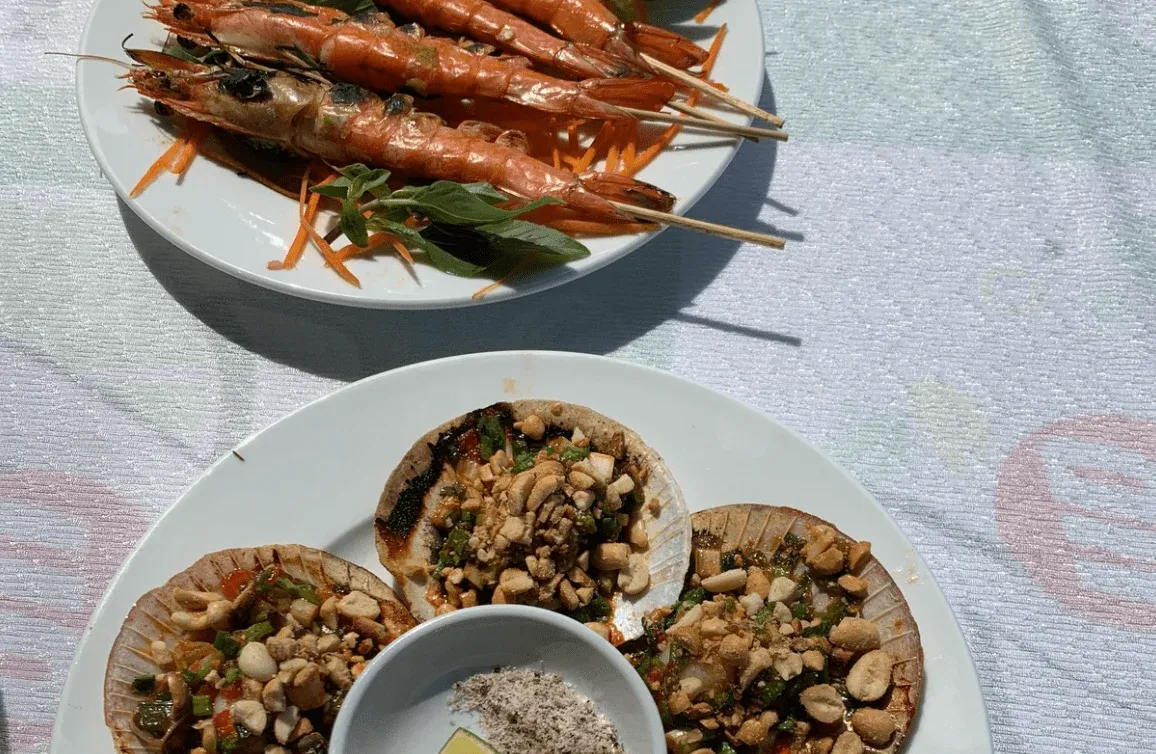
The night market on Nguyen Hoang Street offers a wide variety of local and not-so-local street foods. Worth strolling through to see if you can spot any of the following dishes:
- Banh Mi: The Vietnamese baguette sandwich, stuffed with a variety of ingredients such as pork, pate, vegetables, and loads of herbs.
- Cao Lau: it's a Hoi An specialty, a soup with thick rice noodles, slices of pork, fresh herbs, and crispy croutons. They say the unique flavor comes from the use of water drawn from ancient Cham wells.
- White Rose Dumplings - Banh Bao Vac: delicate steamed dumplings filled with spiced shrimp or pork, shaped like a white rose.
- Mi Quang: Mi Quang is made with wide rice noodles, shrimp, pork, fresh herbs, and peanuts - it’s often served with a small amount of broth.
- Hoi An Chicken Rice - Com Ga Hoi An: Shredded chicken, fragrant rice cooked in chicken broth, and fresh herbs, often garnished with pickled vegetables.
- Banh Xeo: Yummy savory pancakes made with rice flour, turmeric, and coconut milk. They are filled with shrimp, pork, and bean sprouts, and served with mountains of fresh herbs.
Ready to Make Hoi An Your Next Nomad Destination?

Join our global
digital nomad community
Join us for free
Freaking Nomads is supported by you. Clicking through our links may earn us a small affiliate commission, and that's what allows us to keep producing free, helpful content. Learn more



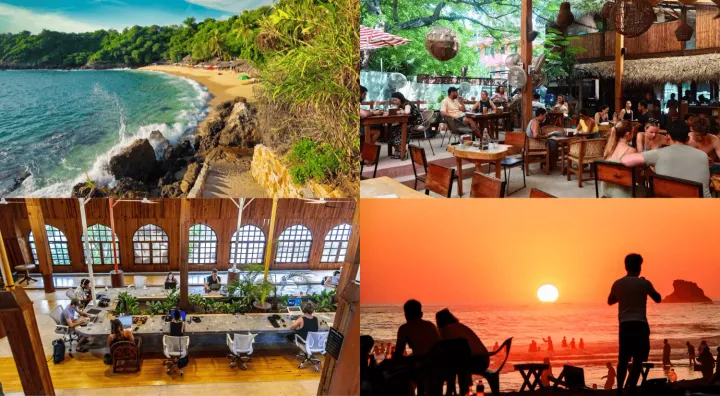
 Travel tips, hacks, and news
Travel tips, hacks, and news Exclusive travel discounts
Exclusive travel discounts Offers and promotions
Offers and promotions Digital nomad inspiration
Digital nomad inspiration Latest articles form our blog
Latest articles form our blog